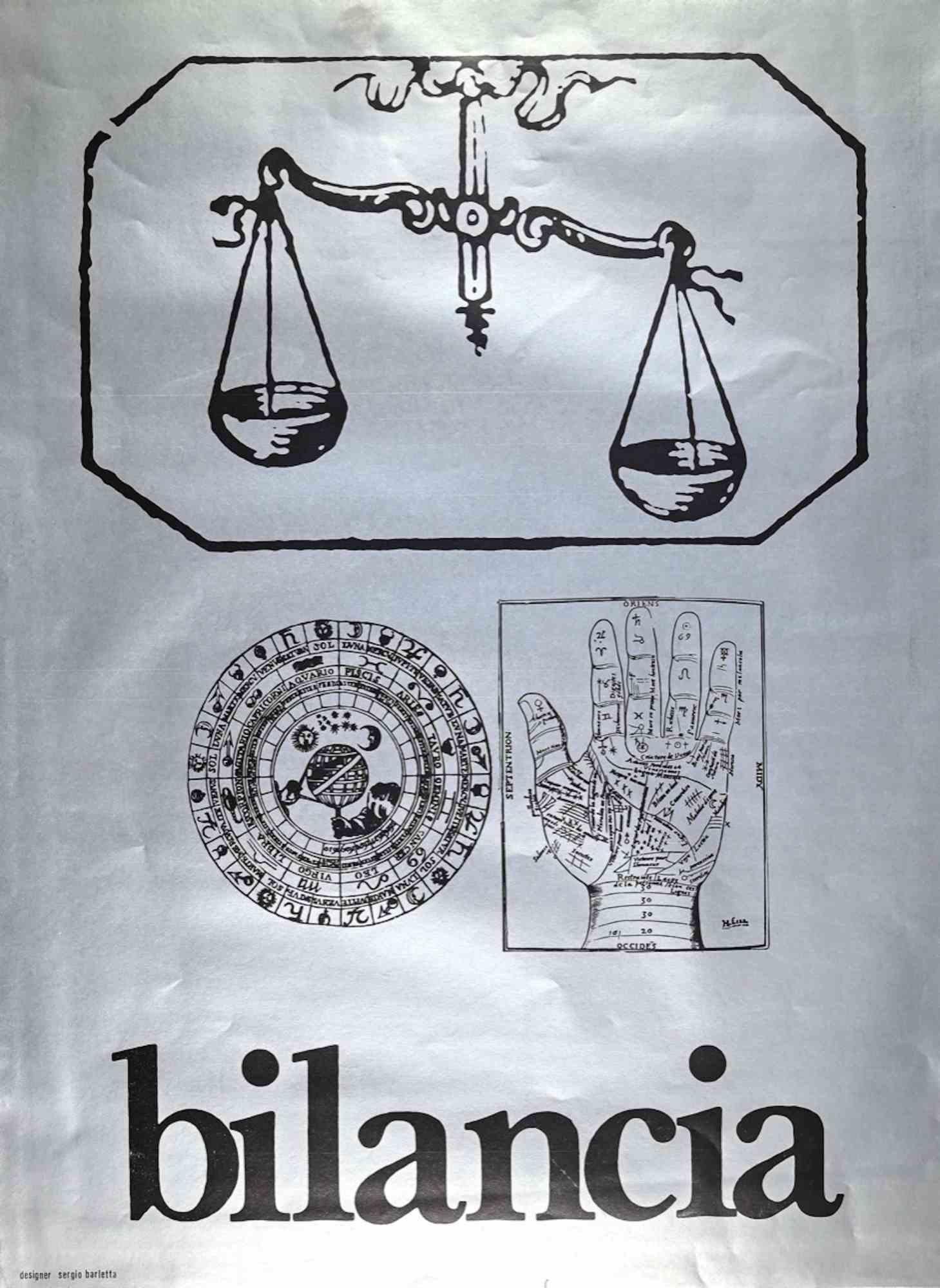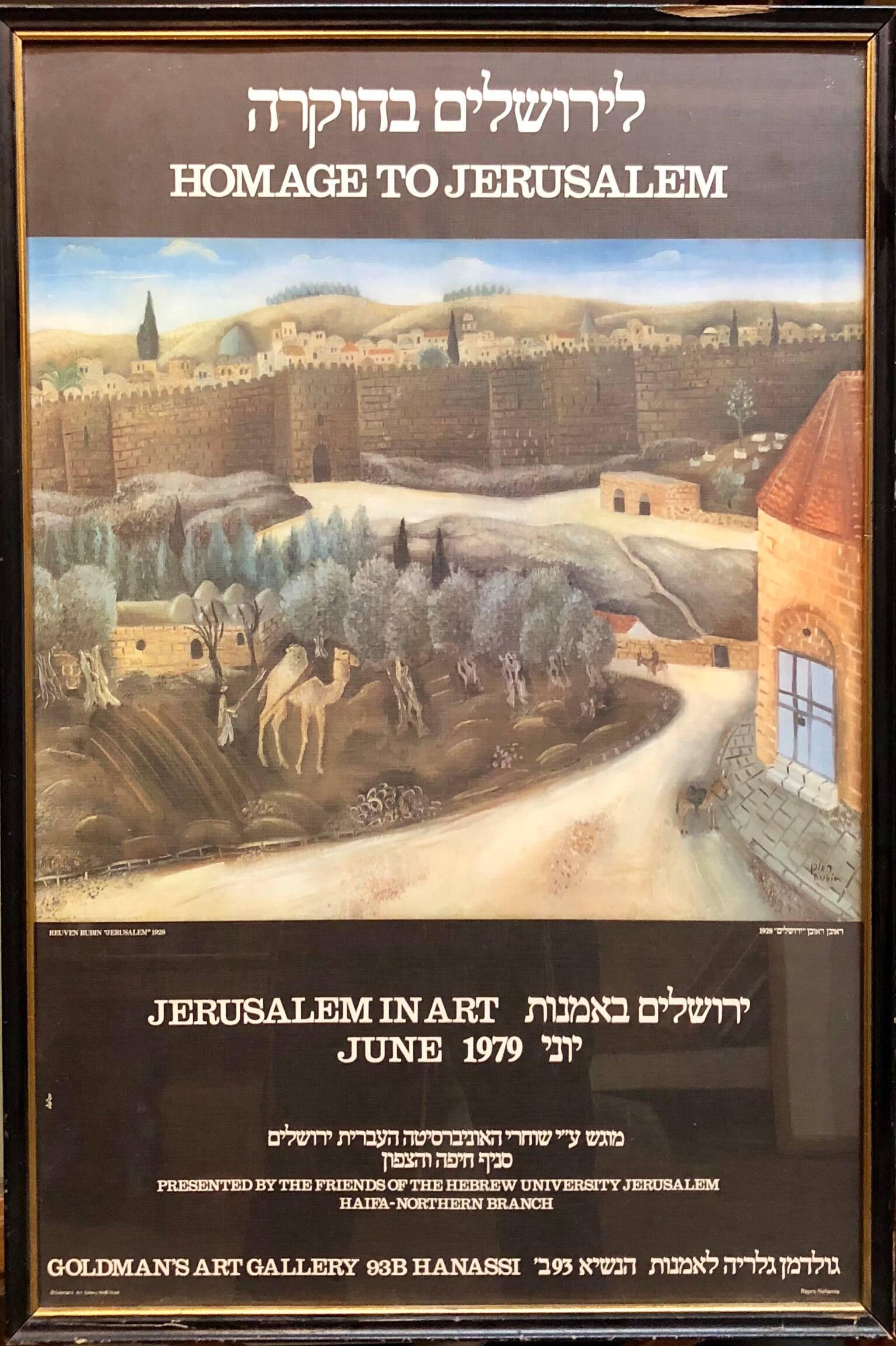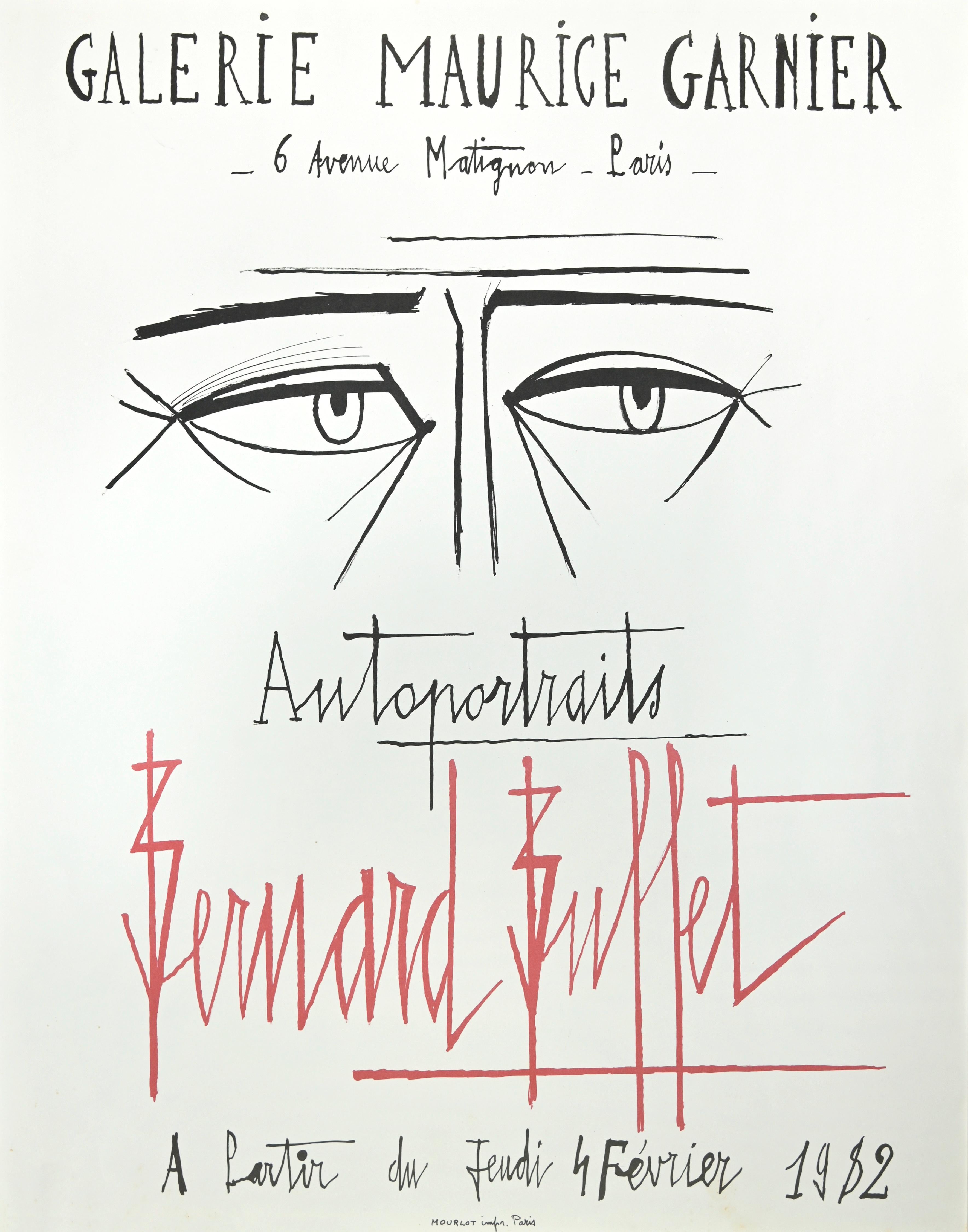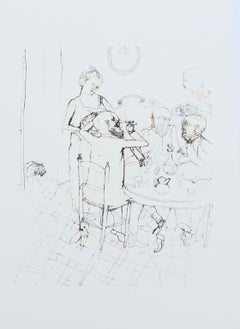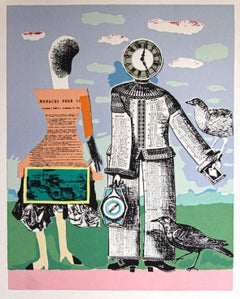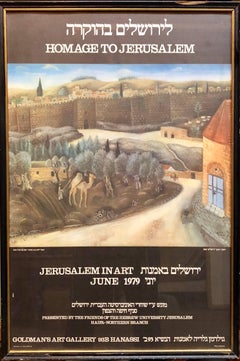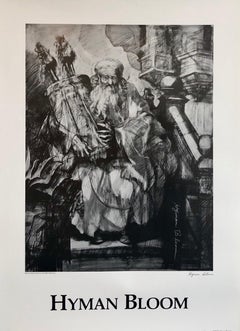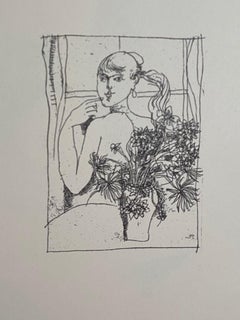
Figures - Vintage Offset after Franco Gentilini - 1970s
View Similar Items
Want more images or videos?
Request additional images or videos from the seller
1 of 5
Figures - Vintage Offset after Franco Gentilini - 1970s1970s
1970s
About the Item
- Creation Year:1970s
- Dimensions:Height: 17.72 in (45 cm)Width: 13.19 in (33.5 cm)Depth: 0.04 in (1 mm)
- Medium:
- Movement & Style:
- After:Franco Gentilini (1909 - 1981, Italian)
- Period:
- Framing:Framing Options Available
- Condition:Insurance may be requested by customers as additional service, contact us for more information.
- Gallery Location:Roma, IT
- Reference Number:Seller: M-1116291stDibs: LU65037372162
About the Seller
4.9
Platinum Seller
These expertly vetted sellers are 1stDibs' most experienced sellers and are rated highest by our customers.
1stDibs seller since 2017
6,693 sales on 1stDibs
Typical response time: 2 hours
More From This SellerView All
- Dining - Vintage Offset by Franco Gentilini - 1970sBy Franco GentiliniLocated in Roma, ITDining is an original Vintage Offset Print on ivory-colored paper, realized by Franco Gentilini (Italian Painter, 1909-1981), in 1970s. The state of preservation of the artwork is e...Category
1970s Modern Figurative Prints
MaterialsOffset
- The Cathedral - Offset by Franco Gentilini - 1970sBy Franco GentiliniLocated in Roma, ITThe Cathedral is an original Vintage Offset Print on ivory-colored paper, realized by Franco Gentilini (Italian Painter, 1909-1981), in 1970s. The state of preservation of the artwo...Category
1970s Modern Figurative Prints
MaterialsOffset
- Figures - Offset Print by Franco Gentilini - 1970sBy Franco GentiliniLocated in Roma, ITFigures is a Vintage Offset Print on ivory-colored paper, realized by Franco Gentilini (Italian Painter, 1909-1981), in 1970s. The state of preservation of the artwork is excellent....Category
1970s Modern Figurative Prints
MaterialsOffset
- Dining - Vintage Offset Print by Franco Gentilini - 1970sBy Franco GentiliniLocated in Roma, ITDining is an original Vintage Offset Print on ivory-colored paper, realized by Franco Gentilini (Italian Painter, 1909-1981), in 1970s. The state of preservation of the artwork is e...Category
1970s Modern Figurative Prints
MaterialsOffset
- The Family - Vintage Offset Print by Franco Gentilini - 1970sBy Franco GentiliniLocated in Roma, ITThe Family is an original Vintage Offset Print on ivory-colored paper, realized by Franco Gentilini (Italian Painter, 1909-1981), in 1970s. The state of preservation of the artwork ...Category
1970s Modern Figurative Prints
MaterialsOffset
- The Cathedral - Original Offset by Franco Gentilini - 1970sBy Franco GentiliniLocated in Roma, ITThe Cathedral is an original Vintage Offset Print on ivory-colored paper, realized by Franco Gentilini (Italian Painter, 1909-1981), in 1970s. The state of preservation of the artwo...Category
1970s Modern Figurative Prints
MaterialsOffset
You May Also Like
- Offset Lithograph Poster Homage to Jerusalem Painting by Israeli Reuven RubinBy Reuven RubinLocated in Surfside, FLJerusalem themed poster of painting by Israeli Master. Reuven Rubin 1893 -1974 was a Romanian-born Israeli painter and Israel's first ambassador to Romania. Rubin Zelicovici (later Reuven Rubin) was born in Galati to a poor Romanian Jewish Hasidic family. He was the eighth of 13 children. In 1912, he left for Ottoman-ruled Palestine to study art at Bezalel Academy of Art and Design in Jerusalem. Finding himself at odds with the artistic views of the Academy's teachers, he left for Paris, France, in 1913 to pursue his studies at the École Nationale Supérieure des Beaux-Arts. At the outbreak of World War I, he was returned to Romania, where he spent the war years. In 1921, he traveled to the United States with his friend and fellow artist, Arthur Kolnik, with whom he had shared a studio in Cern?u?i. In New York City, the two met artist Alfred Stieglitz, who was instrumental in organizing their first American show at the Anderson Gallery.Following the exhibition, in 1922, they both returned to Europe. In 1923, Rubin emigrated to Mandate Palestine. Rubin met his wife, Esther, in 1928, aboard a passenger ship to Palestine on his return from a show in New York. She was a Bronx girl who had won a trip to Palestine in a Young Judea competition.He died in 1974 Artistic career Joseph Zaritsky...Category
1970s Modern Figurative Prints
MaterialsOffset
- Abstract Expressionist Hyman Bloom Judaica Hand Signed Poster Rabbi with TorahBy Hyman BloomLocated in Surfside, FLThis is not editioned. According to his wife this was done privately for his 80th birthday and just given to friends and family. they were not sold. This is from a group of very few that were hand signed by Hyman Bloom for his close friend the artist Martin Sumers. It depicts a 1955 charcoal drawing Rabbi with Torah. Provenance: Acquired from the Martin Sumers estate collection. Hyman Bloom (March 29, 1913 – August 26, 2009) was a Latvian-born American painter. His work was influenced by his Jewish heritage and Eastern religions as well as by artists including Altdorfer, Grünewald, Caravaggio, Rembrandt, Blake, Bresdin, James Ensor and Chaim Soutine. He first came to prominence when his work was included in the 1942 Museum of Modern Art exhibition "Americans 1942 -- 18 Artists from 9 States". MoMA purchased 2 paintings from the exhibition and Time magazine singled him out as a "striking discovery" in their exhibition review. His work was selected for both the 1948 and 1950 Venice Biennale exhibitions and his 1954 retrospective traveled from Boston's Institute of Contemporary Art to the Albright Gallery and the de Young Museum before closing out at The Whitney Museum of American Art in 1955. In a 1954 interview with Yale art professor Bernard Chaet, Willem de Kooning indicated that he and Jackson Pollock both considered Bloom to be “America’s first abstract expressionist”, a label that Bloom would disavow. Starting in the mid 1950s his work began to shift more towards works on paper and he exclusively focused on drawing throughout the 1960s, returning to painting in 1971. He continued both drawing and painting until his death in 2009 at the age of 9 Hyman Bloom (né Melamed) was born into an orthodox Jewish family in the tiny Jewish village of Brunavišķi in what is now Latvia, then part of the Russian Empire At a young age Bloom planned to become a rabbi, but his family could not find a suitable teacher. In the eighth grade he received a scholarship to a program for gifted high school students at the Museum of Fine Arts. He attended the Boston High School of Commerce, which was near the museum. He also took art classes at the West End Community Center, a settlement house. The classes were taught by Harold Zimmerman, a student at the School of the Museum of Fine Arts, who also taught the young Jack Levine at another settlement house in Roxbury. When Bloom was fifteen, he and Levine began studying with a well-known Harvard art professor, Denman Ross, who rented a studio for the purpose and paid the boys a weekly stipend to enable them to continue their studies rather than take jobs to support their families. He took Bloom and Levine on a field trip to the Museum of Modern Art in New York, where Bloom was impressed by the work of Rouault and Soutine and began experimenting with their expressive painting styles. In the 1930s Bloom worked sporadically for the Public Works of Art Project and the Federal Art Project (WPA), He shared a studio in the South End with Levine and another artist, Betty Chase. It was during this period that he developed a lifelong interest in Eastern philosophy and music, and in Theosophy. He first received national attention in 1942 when thirteen of his paintings were included in the Museum of Modern Art (MoMA) exhibition Americans 1942: 18 Artists from 9 States, curated by Dorothy Miller. MoMA purchased two of his paintings from that exhibition, and he was featured in Time magazine. The titles of his paintings in the exhibition reflect some of his recurring themes. Two were titled The Synagogue, another, Jew with the Torah; Bloom was actually criticized by one reviewer for including "stereotypical" Jewish images. He also had two paintings titled The Christmas Tree, and another titled The Chandelier, both subjects he returned to repeatedly. Another, Skeleton (c. 1936), was followed by a series of cadaver paintings in the forties, and The Fish (c. 1936) was one of many paintings and drawings of fish he created over the course of his career. Bloom was associated at first with the growing Abstract Expressionist movement. Willem de Kooning and Jackson Pollock, who first saw Bloom's work at the MoMA exhibition, considered Bloom "the first Abstract Expressionist artist in America." In 1950 he was chosen, along with the likes of de Kooning, Pollock, and Arshile Gorky, to represent the United States at the Venice Biennale. That same year Elaine de Kooning wrote about Bloom in ARTnews, noting that in paintings such as The Harpies, his work approached total abstraction: "the whole impact is carried in the boiling action of the pigment". In 1951 Thomas B. Hess reproduced Bloom's Archaeological Treasure in his first book, Abstract Painting: Background and American Phase, along with works by Picasso, Pollock, and others. Both de Kooning and Hess remarked on Bloom's expressive paint handling, a key characteristic of Abstract Expressionist painting. As abstract expressionism dominated the American art world, Bloom became disenchanted with it, calling it "emotional catharsis, with no intellectual basis." In addition, instead of moving to New York to pursue his career, he opted to stay in Boston. As a result he fell out of favor with critics and never achieved the kind of fame that Pollock and others did. He disliked self-promotion and never placed much value on critical acclaim. Many of Bloom's paintings feature rabbis, usually holding the Torah. According to Bloom, his intentions were more artistic than religious. He began questioning his Jewish faith early in life, and painted rabbis, he claimed, because that was what he knew. Over the course of his career he produced dozens of paintings of rabbis...Category
20th Century Modern Figurative Prints
MaterialsOffset
- New York Metropolitan Opera House : Tirésias - Original Vintage Poster (1981)By David HockneyLocated in Paris, FRDavid HOCKNEY New York Metropolitan Opera House : Tirésias Original Vintage Poster Printed in France by Imprimerie Moderne du Lion in Paris 63 x 43 cm (c. 24.8 x 16.9 inch) This poster was created for the exhibition at Galerie Claude Bernard...Category
1980s American Modern Figurative Prints
MaterialsOffset
- Peace - Offset-lithograph, 1969By Pablo PicassoLocated in Paris, FRPablo PICASSO (after) Peace (La Paix), 1969 Lithograph-offset after a drawing of Picasso On paper 35 x 65 cm (c. 13.7 x 25.5 in) Edited by Cercle d'art in 1969 Excellent conditionCategory
1960s Modern Figurative Prints
MaterialsLithograph, Offset
- The Pope - Vintage PosterBy Francis BaconLocated in Paris, FR(After) Francis Bacon The Pope, 1995 Original vintage poster (hight quality offset) On heavy paper 86 x 50 cm (c. 34 x 20in) Edited by by Maeght for the exhi...Category
1980s Modern Figurative Prints
MaterialsOffset
- Misfits, For Decades in Horror Business - Handsigned and Numbered PrintBy Shepard FaireyLocated in Paris, FRShepard FAIREY The Misfits, For Decades in Horror Business (2017) Offset print Handsigned in pencil Numbered / 450 On paper 61 x 46 cm (c. 24 x 18 inch) Excellent conditionCategory
2010s American Modern Figurative Prints
MaterialsOffset

